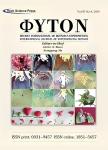Development of Spectral Features for Monitoring Rice Bacterial Leaf Blight Disease Using Broad-Band Remote Sensing Systems
作者机构:College of Artificial IntelligenceHangzhou Dianzi UniversityHangzhou310018China School of Information EngineeringZhejiang University of Water Resources and Electric PowerHangzhou310018China Key Laboratory of Digital Earth ScienceAerospace Information Research InstituteChinese Academy of SciencesBeijing100094China
出 版 物:《Phyton-International Journal of Experimental Botany》 (国际实验植物学杂志(英文))
年 卷 期:2024年第93卷第4期
页 面:745-762页
核心收录:
学科分类:0710[理学-生物学] 09[农学] 0904[农学-植物保护] 090401[农学-植物病理学] 090402[农学-农业昆虫与害虫防治]
基 金:the Strategic Priority Research Program of the Chinese Academy of Sciences(Grant No.XDA28010500) National Natural Science Foundation of China(Grant Nos.42371385,42071420) Zhejiang Provincial Natural Science Foundation of China(Grant No.LTGN23D010002)
主 题:Rice bacterial leaf blight analysis of spectral response multispectral data simulation vegetation indices cross-sensor disease monitoring
摘 要:As an important rice disease, rice bacterial leaf blight (RBLB, caused by the bacterium Xanthomonas oryzae ***), has become widespread in east China in recent years. Significant losses in rice yield occurred as a result ofthe disease’s epidemic, making it imperative to monitor RBLB at a large scale. With the development of remotesensing technology, the broad-band sensors equipped with red-edge channels over multiple spatial resolutionsoffer numerous available data for large-scale monitoring of rice diseases. However, RBLB is characterized by rapiddispersal under suitable conditions, making it difficult to track the disease at a regional scale with a single sensorin practice. Therefore, it is necessary to identify or construct features that are effective across different sensors formonitoring RBLB. To achieve this goal, the spectral response of RBLB was first analyzed based on the canopyhyperspectral data. Using the relative spectral response (RSR) functions of four representative satellite or UAVsensors (i.e., Sentinel-2, GF-6, Planet, and Rededge-M) and the hyperspectral data, the corresponding broad-bandspectral data was simulated. According to a thorough band combination and sensitivity analysis, two novel spectralindices for monitoring RBLB that can be effective across multiple sensors (i.e., RBBRI and RBBDI) weredeveloped. An optimal feature set that includes the two novel indices and a classical vegetation index was *** capability of such a feature set in monitoring RBLB was assessed via FLDA and SVM algorithms. The resultdemonstrated that both constructed novel indices exhibited high sensitivity to the disease across multiple ***, the feature set yielded an overall accuracy above 90% for all sensors, which indicates its cross-sensorgenerality in monitoring RBLB. The outcome of this research permits disease monitoring with different remotesensing data over a large scale.



